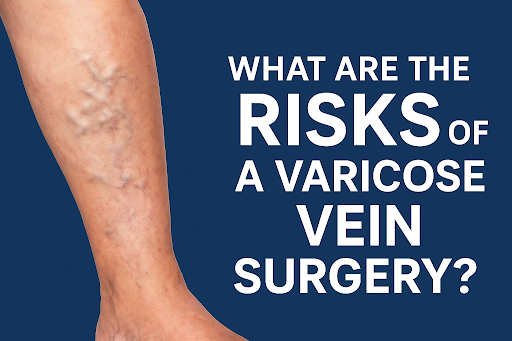Introduction
In recent years, Platelet Rich Plasma (PRP) has gained widespread recognition for its remarkable healing properties. As a non-invasive and natural treatment, PRP has found its way into various medical fields, from orthopedics to dermatology, offering patients an alternative to traditional therapies.
What is PRP?
Platelet Rich Plasma, often referred to as “liquid gold,” is a concentrated form of blood plasma enriched with a higher number of platelets. These platelets contain growth factors crucial for tissue repair and regeneration. The extraction process involves drawing a small amount of the patient’s blood, typically from the arm, and then using a centrifuge to isolate and concentrate the platelets.
Applications in Medicine
The applications of PRP in medicine are diverse and expanding. In orthopedics, PRP is increasingly used for its regenerative properties in treating joint injuries and tissue damage. Simultaneously, in the field of dermatology, PRP is becoming a go-to option for skin rejuvenation and addressing cosmetic concerns.
How Does PRP Work?
PRP works by harnessing the body’s natural healing mechanisms. The concentrated platelets are rich in growth factors that stimulate cell repair and regeneration. When injected into targeted areas, such as injured joints or the face for cosmetic purposes, PRP accelerates the healing process.
How is PRP created?
Approximately 95% of healthcare facilities providing PRP generate it using a push-button, automated centrifuge. The advantage of this method lies in its simplicity for medical practitioners. Essentially, all the physician needs to be aware of regarding the PRP creation process is where to position the sample and how to activate the centrifuge using the “On” button.
However, the drawback of this approach is that the resulting PRP is standardized and not tailored to individual needs. For instance, variations in a patient’s hydration level are not considered in these systems. Consequently, the platelet concentration produced on one day may differ from another day simply due to the varying water intake of the patient. This is because the location of the platelets in the centrifuged blood is influenced by the sample’s water content.
PRP in Orthopedics
For individuals facing joint issues, PRP has emerged as a game-changer. Orthopedic specialists utilize PRP to treat conditions like osteoarthritis, where the regenerative properties of PRP can provide pain relief and enhance mobility. Success stories abound, showcasing the effectiveness of PRP in improving the quality of life for many patients.
Cosmetic Benefits of PRP
Beyond its medical applications, PRP has carved a niche in the cosmetic industry. The growth factors in PRP promote collagen production, reducing fine lines, wrinkles, and improving overall skin texture. Procedures like the “Vampire Facial” have gained popularity for their natural and rejuvenating effects.
Are PRP Treatments Safe?
While PRP treatments are generally safe, it’s crucial to understand the safety measures and potential risks. Common side effects include mild swelling or bruising at the injection site, which is temporary. However, individuals with certain medical conditions may need to exercise caution, emphasizing the importance of consultation with a qualified healthcare professional.
Choosing the Right Provider
Selecting a PRP treatment provider requires careful consideration. Factors such as the provider’s experience, certifications, and reviews from previous patients should influence the decision-making process. Opting for certified professionals ensures a safer and more effective treatment experience.
PRP vs. Traditional Treatments
Comparing PRP against traditional treatments reveals its advantages, such as faster recovery times and reduced invasiveness. However, it’s essential to weigh these benefits against any limitations or specific cases where traditional therapies might be more appropriate.
The Future of PRP
Ongoing research in regenerative medicine holds promise for the future of PRP. As scientists delve deeper into the potential applications of platelet-rich plasma, we anticipate further breakthroughs and an even broader spectrum of treatments.
PRP Myths Debunked
Addressing misconceptions is crucial to understanding the true potential of PRP. From concerns about pain during treatment to doubts about its efficacy, this section dispels common myths and ensures readers have accurate information.
Patient Experience
Real-life stories from individuals who have undergone PRP treatments provide valuable insights. These personal accounts cover the decision-making process, the treatment experience, and the outcomes, offering a more holistic understanding of what to expect.
Expert Opinions
In-depth interviews with medical professionals who specialize in PRP treatments provide expert perspectives. These insights offer readers a glimpse into the medical community’s views on the effectiveness and potential of PRP.
Conclusion
In conclusion, Platelet Rich Plasma treatments offer a promising avenue for those seeking effective and minimally invasive solutions for various health and aesthetic concerns. Understanding the science behind PRP empowers individuals to make informed decisions about their well-being.
FAQs
1. Is PRP treatment painful?
PRP treatments are generally well-tolerated, with most patients reporting minimal discomfort. However, individual experiences may vary depending on the specific procedure and personal pain threshold.
2. How long does it take to see results from PRP cosmetic treatments?
Cosmetic results from PRP treatments may become noticeable within a few weeks, with continued improvement over several months as collagen production is stimulated. Patience is key for optimal outcomes.
3. Are there any side effects of PRP treatments?
While rare, potential side effects of PRP treatments include mild swelling, bruising, or infection at the injection site. These effects are typically temporary and resolved on their own.
4. Is PRP covered by insurance?
Insurance coverage for PRP treatments varies. Patients should contact their insurance provider to determine the extent of coverage for specific procedures and whether pre-authorization is required.
5. Can PRP be used for hair loss treatment?
Yes, PRP has shown promising results in promoting hair growth and addressing certain types of hair loss. Consulting with a specialist is recommended to assess individual suitability and develop a personalized treatment plan.








